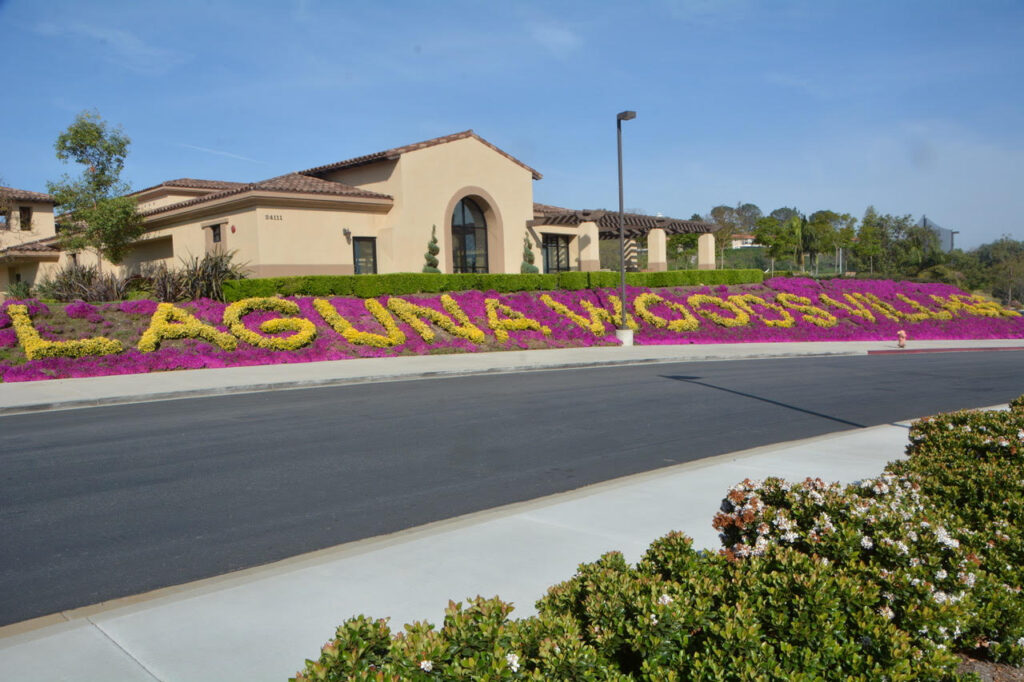
To a cheering crowd, United Mutual Landscape Committee members announced last week that any moves regarding the removal of Canary Island pines in the Village have been halted after a recent uproar.
The removal of up to 393 of the pine trees will be discussed later, after resident input on proposals for maintaining the wooded areas, the Landscape Committee said March 10.
About 25 residents attended the meeting, and many voiced their concerns about the possibility that so many trees would be removed. Earlier in the week, residents called the trees’ removal “excessive” and “environmentally wrong” during these “ecologically stressed times.”
“We are all connected to these trees – they have souls, they’re alive,” United member Imelda Aguilera said at the March 10 meeting. “Killing trees is like killing us.”
Kurt Wiemann, director of Landscape Services for Village Management Services, said there had been a miscommunication from the start. “My staff never intended on removing 393 trees,” he said, noting that an article published in the February/March edition of the Village Breeze may have unintentionally misled residents.
That 393 number makes up 40% of the 992 Canary Island pines in the Village and 2% of all trees in total, according to a staff report.
“There is no intent to go forward with this, without resident input,” Wiemann said, noting that he and the five arborists on his team had been following “marching orders” passed onto him from a tree maintenance project that has switched hands over years.
The original plan was to first land an affordable deal below budget with a contractor and award the bid early on to lock in the lowest pricing, and then consult with residents, Wiemann said.
He said this approach is made possible by the flexibility written into the contract, which allows VMS to increase or decrease the amount of work after the contract is accepted.
Of the eight companies that VMS pursued, four submitted bids, Wiemann said. The winning bid came in at $600,000 – one quarter less than the $800,000 budget for the project.
“This is a big project,” Wiemann said. “VMS’ task is to maintain your assets, and your trees are one of your assets.”
Removal costs $1,552 per tree, while saving long term in maintenance costs, according to the staff report. Reconstructive trimming, where there is 25% reduction in foliage, costs $1,320 per tree.
Routine trimming maintenance costs $168 per tree.
The Canary Island pines are overgrown and haven’t been trimmed correctly in years; therefore, they require a full-maintenance trim, Wiemann said.
The criteria in the study of the trees used six points to identify which ones were suited for removal.
Of the 393 Canary Island pines identified, 86 were pinpointed for excessive needle dropping; 140 trees are causing or have the potential to cause infrastructure damage; 142 trees are causing or have the potential to cause roof damage; 14 threaten turf health; and 11 are decaying.
Residents challenged removing trees just because they are messy or their canopies had been allowed to get so dense that they affect turf growth.
Resident Barbara Bryan, a self-professed tree hugger, suggested that residents “could be part of the solution here too.”
She offered an idea to create an adopt-a-tree program in which residents would tend to a select number of trees that shed at higher volumes.
“Once the trees are taken down, that’s when we will notice how much the trees were helping us,” Bryan added, highlighting their contribution in deadening noise pollution from the main roads and neighboring freeway.
Resident Mary Sinclair also voiced her concerns: “If we want to keep the woods in Laguna Woods, we need to preserve as many groves as we can,” she said.
Given the opposition to the proposal and the impressive turnout at the meeting, Wiemann proposed scrapping the original plan and starting with resident interaction before the bid.
Still, United members questioned their influence over protecting trees in their community.
“The landscape [committee] has the prerogative to override any decision,” resident Jeri Miller said, a detail she learned earlier in the week during a regular meeting of the United board. “I found that to be really disturbing to hear. If the majority doesn’t want the trees removed … what power do we really have?”
Wiemann suggested that residents who would like to become more involved in the issue can reach out to VMS CEO Siobhan Foster via email at generalmanager@vmsinc.org for more information on joining a resident advisory group.
